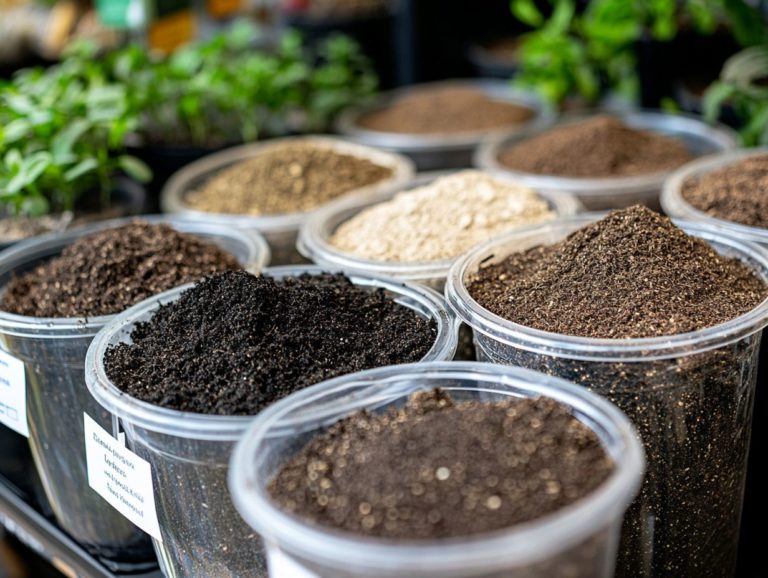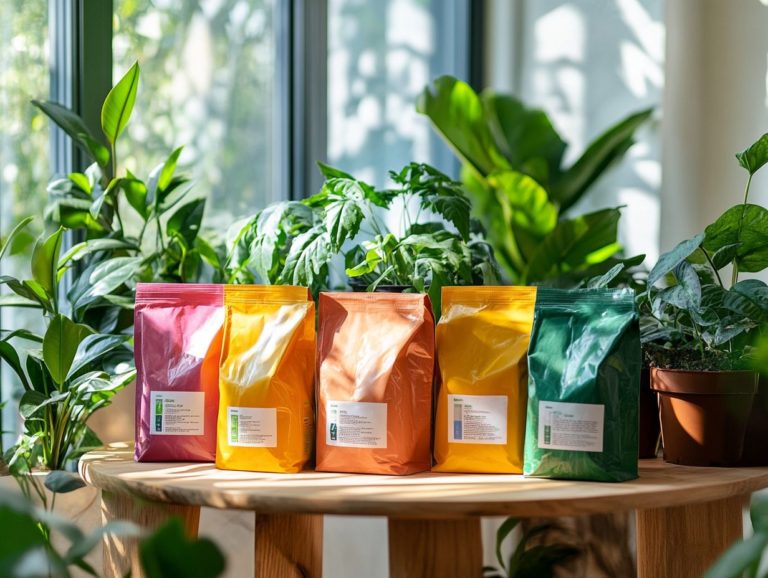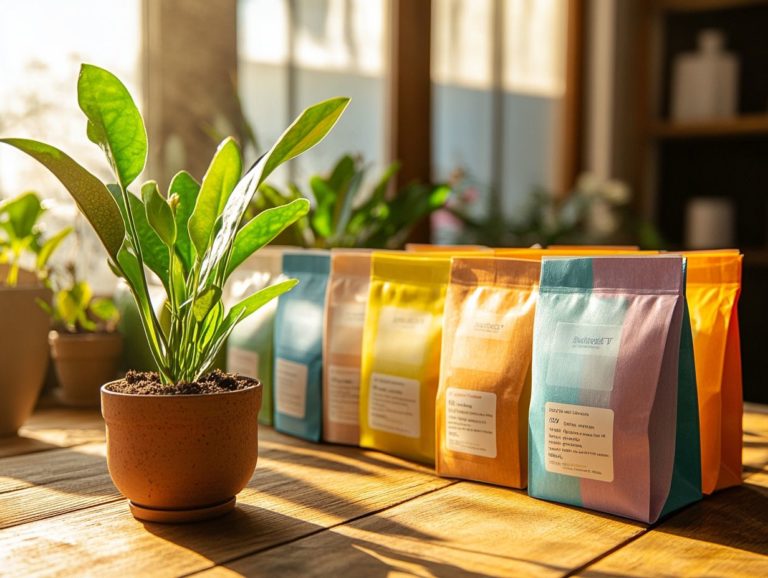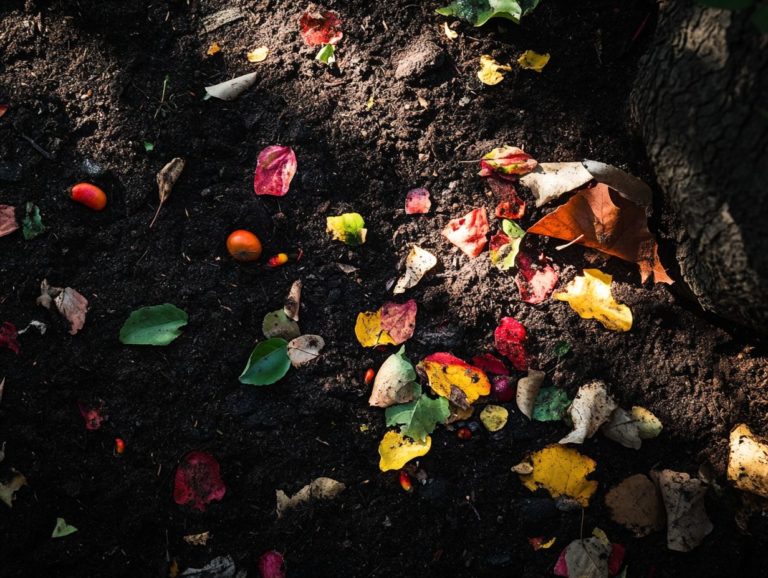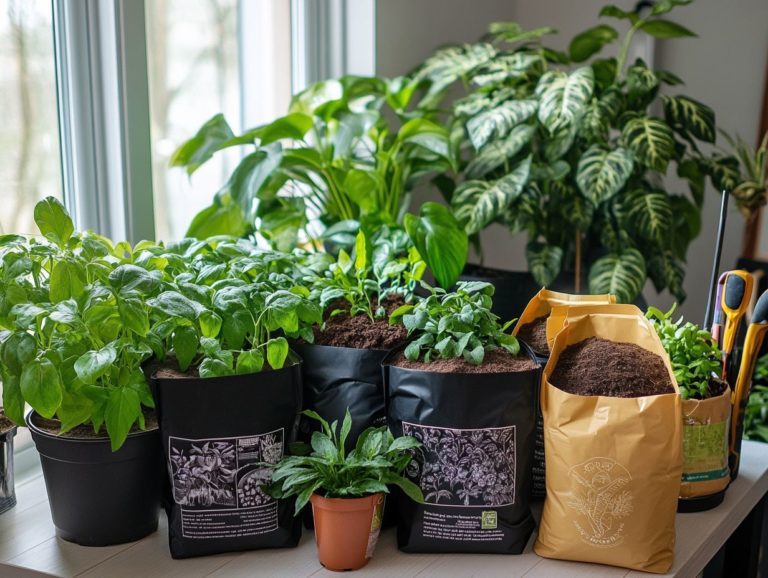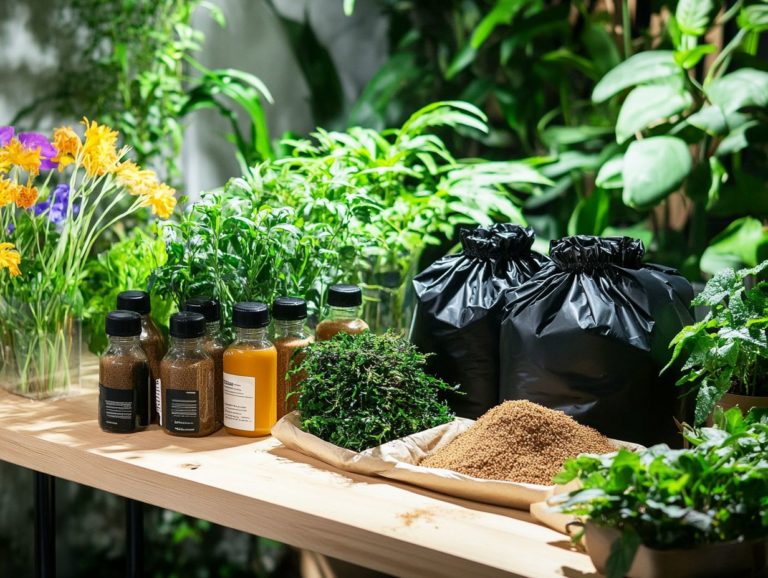Understanding Soil Drainage and Aeration
Soil and its components drainage and aeration are essential for gas exchange and root health, influencing everything from nutrient uptake to overall plant well-being. When your plants are well-supported by their soil environment, they thrive. However, poor drainage and aeration can trigger a series of complications that stifle growth.
This article delves into the importance of these factors, the components that affect them, indicators of underlying issues, and effective strategies for enhancement. Discover with us the keys to maintaining healthy, productive soil for your plants.
Contents
- Key Takeaways:
- The Importance of Soil Drainage and Aeration
- Factors Affecting Soil Drainage and Aeration
- Signs Your Soil Needs Attention
- Improving Soil Drainage and Aeration
- Maintaining Healthy Soil
- Frequently Asked Questions
- What is soil drainage and why is it important for plant growth?
- How does soil drainage affect plant health and development?
- What factors affect soil drainage?
- Want to boost your garden’s soil drainage? Here are some effective methods!
- What is soil aeration and why is it important?
- How can I aerate my soil?
Key Takeaways:
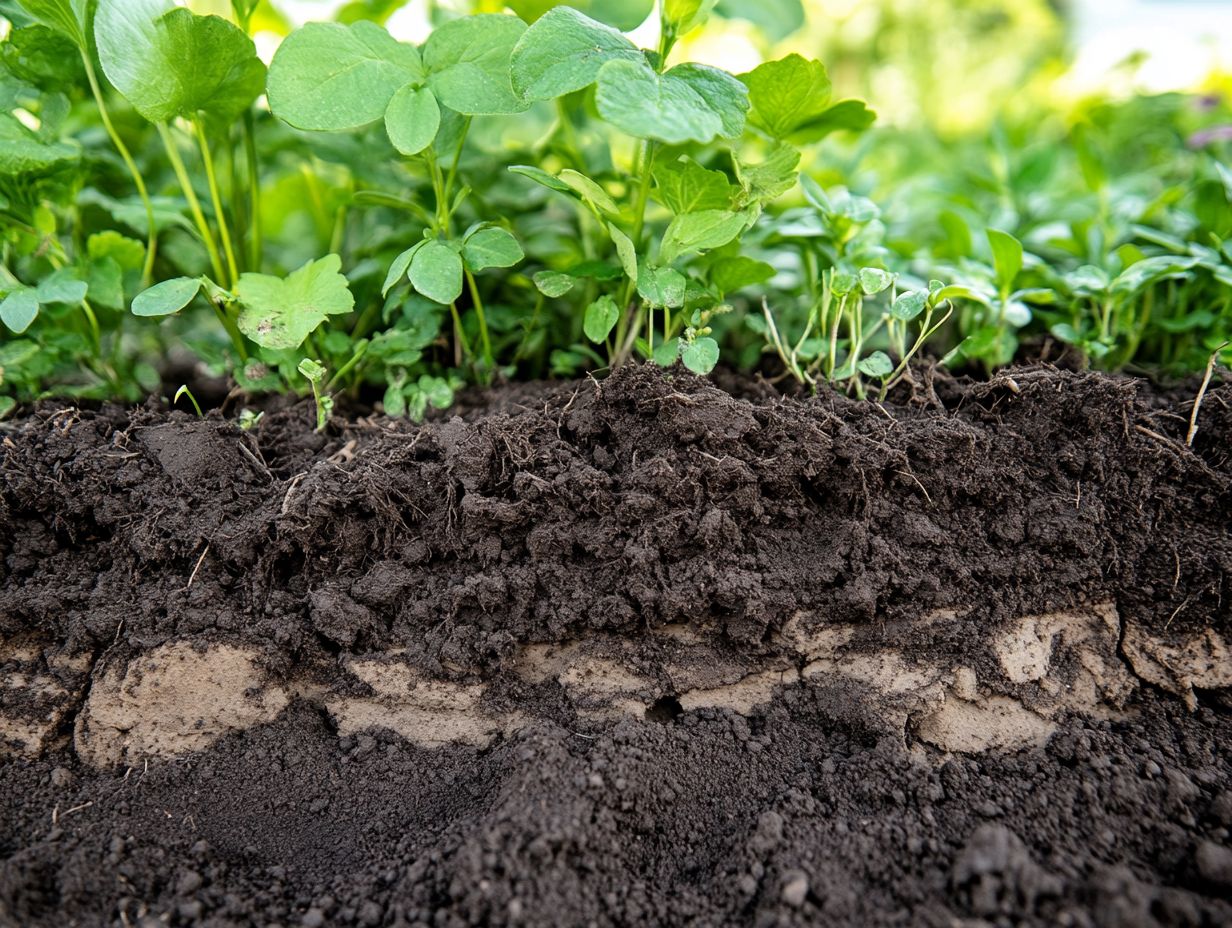
- Understanding soil drainage and aeration is crucial for healthy plant growth. Adequate aeration supports strong root health.
- Soil composition, structure, and climate greatly impact drainage and aeration.
- Identify signs of poor drainage and aeration. Use proper methods to improve and maintain healthy soil in the long run.
The Importance of Soil Drainage and Aeration
Soil drainage and aeration are vital for sustaining healthy plant growth. They strike a perfect balance between keeping moisture in the soil and ensuring adequate water movement and gas exchange, which allows roots to flourish.
Implementing effective drainage systems prevents soil compaction, enhancing soil quality and overall plant vitality. It facilitates nutrient transport while simultaneously preventing complications like soil compaction that can hinder nutrient transport and inadequate root development.
Understanding these essential factors is key to successful agriculture and gardening.
How it Affects Plant Growth
The relationship between soil drainage, aeration, and plant growth is crucial for your gardening success. Proper management of these factors directly influences soil moisture levels and facilitates the transport of nutrients to the roots.
When drainage is lacking, the soil can become waterlogged, creating conditions that stifle root expansion and significantly reduce nutrient absorption. Different soil types affect moisture retention and play a role in how quickly water moves, which can dramatically impact moisture availability and plant growth. For example, sandy soil drains rapidly but may not hold enough water, while clay soil retains moisture yet can become too compacted, limiting necessary airflow for robust root health.
These differences highlight the importance of grasping moisture dynamics. Achieving the right balance allows roots to efficiently access essential nutrients, ultimately supporting the overall health and development of your plants.
Factors Affecting Soil Drainage and Aeration
Several factors can profoundly influence soil drainage and aeration, such as soil composition, structure, and texture. These elements play a pivotal role in determining moisture levels and drainage efficiency, which is essential for soil health.
Grasping these nuances is essential for maintaining optimal soil health, as they directly affect how effectively water traverses the soil and how well air circulates to support robust root growth.
Start improving your soil today for a flourishing garden tomorrow!
Soil Composition and Structure

Soil composition and structure are crucial in determining how effectively drainage and aeration function. They directly impact pore space and pore size, as well as how soil particles are arranged, which affects how well water drains.
You ll find that different soil types like clay, sand, and silt vary widely in particle size and distribution. This influences the size and connectivity of pore spaces within the soil. In well-structured soils, larger pores facilitate quicker water movement, allowing excess moisture to drain away and preventing issues like root rot.
On the flip side, poorly structured soils can become compacted, leading to smaller pore sizes that trap water and restrict airflow, ultimately stunting plant growth.
Maintaining this balance is essential for roots to access not only water but also the vital nutrients necessary for healthy development. This underscores the intricate relationship between soil composition and overall plant health.
Climate and Weather Conditions
Climate and weather conditions play a crucial role in determining soil drainage and aeration, which directly influences moisture availability and the overall health of the soil.
In wet climates, for instance, consistent rainfall can saturate the soil, leading to poor aeration and increasing the risk of root rot for your plants. However, in dry climates, you often encounter compacted soil where water drains too quickly, making it challenging for roots to access the moisture they desperately need.
Heavy storms can cause significant erosion, washing away topsoil that is essential for growth. Conversely, prolonged dry spells can enhance moisture retention in the deeper layers of soil, fostering healthier root systems.
Ultimately, it s this intricate interplay of climatic factors that dictates the vitality of plant life in your area.
Signs Your Soil Needs Attention
Recognizing the signs of inadequate drainage and aeration is crucial for preserving the vitality of your soil. Problems such as soil compaction and moisture saturation can significantly obstruct gas exchange and impede root development.
By staying vigilant, you can ensure your soil remains healthy and conducive to plant growth.
Identifying Common Issues
You can easily identify common issues related to poor soil drainage and aeration through careful visual observations and soil testing. Keep an eye out for signs like soil compaction and inconsistent moisture levels.
For instance, if you notice pooling water in your garden or lawn after a rain, it might signal that your drainage solutions need a little help. On the flip side, if certain areas seem overly dry, that could indicate compacted layers lurking beneath the surface.
To tackle these issues effectively, begin with a simple percolation test to see how quickly water absorbs. Here are a couple of strategies you might consider:
- Aerate the soil using a core aerator to relieve compaction. This enhances water infiltration, which is crucial for plant health.
- Incorporate organic matter like compost to improve soil structure, texture, and composition, thereby boosting both drainage and aeration.
By regularly monitoring the soil and making adjustments based on what you observe, act now to cultivate healthier soil that promotes vibrant plant growth.
Improving Soil Drainage and Aeration

Enhancing soil drainage and aeration is crucial for fostering robust plant growth and optimizing agricultural productivity. By implementing effective soil management practices, you can create an environment where plants thrive and yields are maximized.
Take these steps today to give your plants the best chance to flourish!
Methods and Techniques
You can employ various methods and techniques to improve soil drainage and aeration, such as incorporating organic matter and installing effective drainage solutions.
Installing drain tiles effectively redirects excess water away from plant roots, reducing the risk of root rot and promoting healthier growth. Utilizing aeration tools punctures the soil, allowing air, water, and nutrients to penetrate deeper, fostering a more robust root system.
Adding organic matter, like compost or well-rotted manure, enhances soil structure by promoting microbial activity, significantly improving nutrient availability.
These practices boost plant vitality while enhancing the overall health of the soil, creating a thriving ecosystem that supports sustainable gardening.
Maintaining Healthy Soil
Maintaining healthy soil demands your commitment to best practices in soil management. Emphasizing erosion control is vital for sustainable gardening, moisture retention, and sustainable agricultural methods. Prioritizing these principles ensures your soil remains healthy for future generations.
Best Practices for Long-Term Success
Adopting best practices for long-term success in soil health means integrating strategies that enhance organic matter, promote a variety of plants and animals, and support effective agricultural practices.
For instance, incorporating organic matter like compost or planting cover crops improves soil structure. This not only enriches the soil with essential nutrients but also enhances drainage and aeration, crucial for healthy root development.
Another effective strategy is crop rotation, which helps break pest and disease cycles, reducing reliance on chemical inputs. Growing diverse plants in succession enhances soil fertility and encourages microbial diversity.
As a result, you ll notice a significant improvement in soil resilience, leading to optimal crop yields and ensuring environmental sustainability.
Frequently Asked Questions

What is soil drainage and why is it important for plant growth?
Soil drainage refers to the movement of water through soil. It is essential for plant growth because it allows for proper aeration and prevents waterlogged conditions that can suffocate plant roots.
How does soil drainage affect plant health and development?
Poor soil drainage can lead to root rot, nutrient deficiencies, and stunted growth in plants. Well-drained soil allows oxygen to reach the roots, promoting root growth and supporting overall plant health.
What factors affect soil drainage?
Soil texture, structure, and slope influence soil drainage. Sandy soils typically have good drainage, while clay soils tend to retain water. Compacted soils also have poor drainage, as do flat or low-lying areas where water can collect.
Want to boost your garden’s soil drainage? Here are some effective methods!
One way to improve soil drainage is by adding organic matter, such as compost, to the soil. This can help break up heavy clay soils and enhance drainage. Installing drainage pipes or creating raised beds can also help.
What is soil aeration and why is it important?
Soil aeration is the process of creating air pockets in the soil by breaking it up or adding amendments like compost. This allows better air circulation, crucial for root respiration and nutrient uptake in plants.
How can I aerate my soil?
You can aerate your soil by using a garden fork or a mechanical aerator to poke holes in the soil. Another method is mixing in organic matter or using a specialized soil aerator tool. It is advisable to aerate your soil at least once a year, especially in areas with heavy or compacted soil.
Start improving your soil today for better gardening results!

